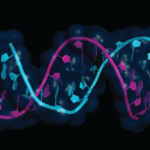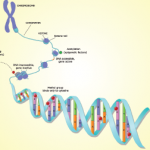For RA to kick into motion, other components are required, including Fc receptors, mast cells, complement, and immune complexes, Dr. Firestein explained. Immune complexes provide pathogenic antibodies access into the joints and initiate inflammation by binding to the surface of cartilage, fixing complement, and then triggering RA. Even irrelevant immune complexes not directed against joint antigens can allow these antibodies penetrate into the joint, said Dr. Firestein.
Fc receptors are proteins found on the surfaces of macrophages and other cells involved in the immune response. When they are on the surface of mast cells, these proteins bind immune complexes, release vasoactive mediators, and increase permeability of the antigens into the joint tissues, he said. Complement also plays an important role in the triggering process. “Complement is consumed in the joints of people with RA,” Dr. Firestein explained.
Triggering the Cause of Active Disease
Evidence of RA can be detected in mice before signs of inflammation present, he said. Scientists still don’t know what triggers active disease. “The process probably involves evolution of a normal immune response to altered proteins to true autoimmunity,” said Dr. Firestein. “The transition to chronic disease occurs quickly.” The activation of certain cytokine networks leads to the development of aggressive synoviocytes in the joint lining, “cells that are almost tumorlike in their destruction of joints,” he added. The most important T-cell cytokine networks in RA development appear to involve TH-1 and TH-17 cells.
Epigenetics, or heritable changes in the genome without changes in the DNA sequence itself, is a key element in RA pathogenesis, including DNA methylation. “When DNA methylation goes awry, it can have a deleterious effect, including cancer,” said Dr. Firestein. DNA methylation can also alter the balance between TH-1 and TH-2 cells and contribute to the transformation of RA synoviocytes.
Epigenetic changes last for generations, Dr. Firestein said. “Epigenetics is designed to protect individuals faster than Darwinian evolution by allowing them to respond to their environment. Not just you, but your progeny and your progeny’s progeny.” This imprinting can also be seen in synoviocytes from RA patients, where stable DNA methylation signatures involving genes regulating immune responses, cell adhesion, and cell migration have been discovered.
Rheumatoid arthritis is probably a syndrome with many possible avenues to development of clinical disease, Dr. Firestein concluded. “We have very similar early events involving normal immune response to altered proteins, later evolving into autoimmunity through epitope spreading. Then the environment, genetics, and epigenetics influence the direction in which it goes, which increases its complexity. The complexity is then reflected in the diversity of response to targeted therapies.”


